India Will Have More Ecommerce Users Than US’ Population By 2025
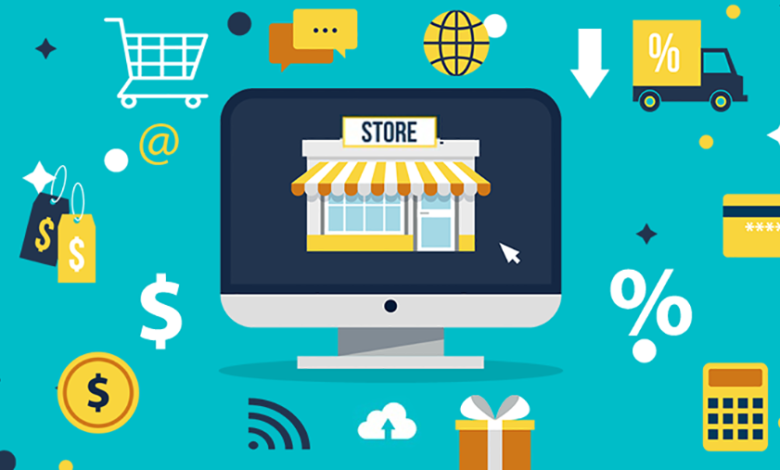
India Will Have More Ecommerce Users By 2025 Than US’ Population
According to new research, India will have more e-commerce users by 2025 than the entire population of the United States. In addition, seven out of ten internet users are likely to execute an online transaction in the same time frame.
The Indian eCommerce market is predicted to develop at a compound annual growth rate (CAGR) of 23 per cent to reach half a billion dollars by the end of this decade.
According to a private wealth management firm Bernstein report, India’s internet buyers will number 330 million by 2025. “With new prospects in social commerce/quick commerce, the TAM is growing.” Flipkart is developing Shopsy (a social commerce platform) and growing Flipkart Quick (hyperlocal). According to the firm, reliance is acquiring Dunzo (Quick commerce) to scale JioMart.
“During Covid-19, we noticed an exponential increase in consumers turning to internet buying. “The tendency will expand as more customers come online to shop from Tier 2 and Tier 3 cities,” said Manoj Mansukhani, Wunderman Thompson South Asia’s chief digital officer.
“With marketplaces like Amazon being the first port of call for product searches,” he continued, “companies must build a separate content strategy to assist engage with shoppers on these platforms.”
Ecommerce marketplaces, according to Vijay Iyer, Director of Ad Sales at Amazon Ads India, are shaping brand and product discovery. According to the report, ” Rather than limiting themselves to “advertising real estate,” marketers have a unique opportunity to develop connections with customers through an immersive content experience.
According to a Bernstein analysis, eCommerce is the largest market of the Indian internet, with a projected growth of more than five-fold to $133 billion by 2025. “We believe the industry will not be a winner-take-all,” the private wealth management firm continued, “and numerous competitors will emerge across categories and markets.”
According to a recent survey, 56 per cent of businesses expect e-commerce to accounting for the majority of their sales within the next three years.
This opens up many possibilities for entrepreneurs who want to take their company online and sell things using eCommerce.
“What is eCommerce?” is a complex question with many answers. Ecommerce encompasses a wide range of enterprises and can involve selling across multiple channels and simply selling online.
Smart business owners recognise the value of putting their items in front of their clients where they are: online. Ecommerce is changing how businesses sell their products, process orders, and provide customer service.
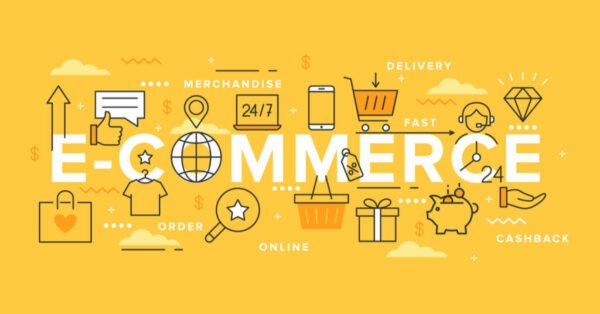
What Is Ecommerce?
Ecommerce is the term used to describe all online activity, including purchasing and selling goods and services. In short, it is the process of doing transactions over the internet.
You’re engaging in commerce when you go to your favourite online retailer to buy a new pair of shoes. It includes paying for a concert online or purchasing a plane ticket on an airline’s website.
But, eCommerce is not limited to the PC. Mobile commerce accounts for the majority of eCommerce traffic. Mobile commerce sales are predicted to account for more than half of all eCommerce sales by 2021 because of the effect of smartphones and the convenience of online purchasing.

Ecommerce on the Rise
According to eMarketer, global eCommerce will exceed $5 trillion by 2021.
Many business owners are going online to keep ahead of the curve, not just by having a website but also by selling their products and services directly through their website and other eCommerce platforms.
The most recent eCommerce statistics show that online shopping behaviour is evolving and that client preferences are driving eCommerce growth:
- By 2021, eCommerce sales are expected to account for 17.5 per cent of all retail sales.
- Online shopping is used by 21.8 per cent of the world’s population. If you’re not selling online, you’re missing out on a vast pool of potential purchasers. B2B eCommerce in the United States will reach $1.8 trillion by 2023, according to Forrester.
- Seventy-three per cent of shoppers browse through several channels, such as Google, social media, and email.
It’s critical to keep up with the current business trends to optimise sales and give the customised experience that clients demand. Ecommerce is clearly increasing globally, so now is the time to examine it as a viable business. It’s not too late to join the eCommerce revolution, with 95 per cent of all purchases predicted to be made online by 2040.
The Benefits of Ecommerce
While there are numerous reasons to establish an eCommerce business, there are some incredible rewards to look forward to once you get started.
The advantages extend far beyond the convenience of conducting business online. Here are some of the advantages you can expect once your online business is up and running:
- Convenience. Ecommerce is the most convenient and accessible way to shop, and customers can get precisely what they need from their PC or mobile device at any time. More ease for the customer means more revenue for your business.
- Borderless Transactions. The operations of a physical store are limited to a specific geographic area. On the other hand, an eCommerce website allows your company to reach out to a more significant number of clients worldwide, enhancing your sales potential.
- Make Money While You Sleep The internet is a 24-hour-a-day, seven-day-a-week. You most likely have regular business hours if you have a physical store. Your products are available for purchase at any time by people all over the world through eCommerce.
- Scalability. You can extend your eCommerce enterprises to accommodate additional sales as your consumer base grows. Instead of relocating or upgrading your physical store (which might be costly), you can raise the bandwidth on your eCommerce platform to accommodate increased traffic and orders. You may also use prior sales data to estimate future sales and extend your platform accordingly.
- Personalized Experiences. You can use artificial intelligence (AI) in eCommerce to provide a tailored buying experience for your customers. You provide clients with things they’re most likely interested in, improving your business’s revenues with AI-enabled up-selling and cross-selling.
- Access to cutting-edge technology. You’ll find additional methods to streamline your business procedures as technology advances, saving you time and money. There are limitations to what technology can do in a physical store. You’ll find various tools and integrations for eCommerce that will help you sell your products, boost team collaboration, and deliver better customer support.
- Affordable and Effective Marketing. You’ll have a variety of economic marketing channels to bring people to your eCommerce business instead of relying on traditional marketing strategies like print ads to drive traffic to a physical store. You may reach a segmented market for a lesser cost by using search engine marketing, organic and paid social media ads, and email marketing.
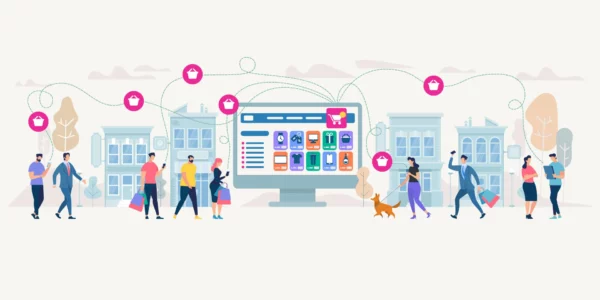
The Different Types of Ecommerce Business Models
Ecommerce allows you to sell products directly to customers or services to other businesses. In reality, you should think about various eCommerce options before opening your online store.
Here are some examples of different types of eCommerce businesses:
B2C — BUSINESS TO CONSUMER
Selling goods or services to individual clients is referred to as B2C eCommerce. When most individuals hear the word “eCommerce business,” they think of B2C.
Traditional business-to-consumer (B2C) sales occur between a company and a single customer. In this approach, a customer finds a company online and puts an order, after which the company ships the product to the customer. A B2C e-commerce strategy, on the other hand, entails utilising consumer data to gain a complete picture of customers throughout their online shopping excursions.
B2B — BUSINESS TO BUSINESS
Selling items or services to businesses is referred to as B2B eCommerce. B2B enterprises are more likely to have larger order values and repeat orders.
Manufacturing equipment, distribution, website hosting services, financial services, and software solutions for businesses are just a few examples of B2B eCommerce offerings. These firms provide the products or services that other companies require to expand.
E-commerce Industry in India
E-commerce has transformed the way people do business in India. The Indian e-commerce market is expected to grow to US$ 188 billion by 2025, up from US$ 46.2 billion in 2020. By 2030, it is expected to be worth US$ 350 billion. By 2022, the Indian e-commerce market is predicted to rise by 21.5 per cent to US$ 74.8 billion.
By 2024, India’s e-commerce business is predicted to be worth US$ 111 billion, and by 2026, it will be worth US$ 200 billion.
An increase in internet and smartphone usage has sparked most of the industry’s growth. Due to the ‘Digital India’ campaign, the number of internet connections expanded dramatically to 830 million in 2021. 55 per cent of all internet connections were made in metropolitan areas, with 97 per cent of those connections being wireless.
Size Of The Market
The Indian online grocery market is expected to grow at a CAGR of 33%, from US$ 3.95 billion in FY21 to US$ 26.93 billion in 2027. India’s consumer digital economy is predicted to reach US$ 1 trillion by 2030, up from US$ 537.5 billion in 2020, thanks to the country’s rapid adoption of online services such as e-commerce and edtech.
By 2025, e-commerce in India is anticipated to be worth US$ 188 billion, according to Grant Thornton.
India became the 8th largest e-commerce market in 2020, following France but ahead of Canada, with a turnover of $50 billion.
Indian E-commerce is predicted to touch US$ 200 billion by 2026, from US$ 38.5 billion in 2017, thanks to increasing smartphone penetration, the rollout of 4G networks, and rising consumer wealth. Behind China and US, India has the third-largest online shopping base in 2020, with 140 million people.
Even before the country’s next-generation mobile internet technology is rolled out, Indian consumers increasingly buy 5G cellphones. In 2021, smartphone shipments hit 169 million, with 5G shipments increasing by 555 per cent year over year. Even before the country’s next-generation mobile internet technology is rolled out, Indian consumers increasingly buy 5G cellphones. Smartphone shipments surpassed 150 million units in 2020, with 5G smartphone shipments surpassing 4 million, thanks to strong customer demand following the lockout. India’s internet users will reach 900 million by 2025, up from 622 million in 2020, with a CAGR of 45 per cent between 2020 and 2025.
Indian e-commerce platforms achieved sales worth US$ 9.2 billion in Gross Merchandise Value (GMV) for the festive season of 2021, up 23 per cent from last year’s US$ 7.4 billion.
INVESTMENTS
Some of the significant developments in the Indian e-commerce sector are as follows:
- In 2021, India’s eCommerce sector attracted US$ 15 billion in PE/VC investments, up 5.4 times from the previous year. This is the greatest investment value ever obtained by any Indian sector.
- After raising $300 million in Series F funding in February 2022, Xpressbees became a unicorn with a US$ 1.2 billion valuation.
- Amazon India introduced the One District One Product (ODOP) mart on its platform in February 2022 to help MSMEs.
- In February 2022, Flipkart introduced the “sell back programme,” allowing users to swap their old cellphones.
- Walmart asks Indian merchants to join its US marketplace in January 2022 to export US$ 10 billion per year from India by 2027.
- Flipkart announced an expansion of its grocery services in January 2022, with plans to serve 1,800 Indian cities.
- XPDEL, a US-based eCommerce company, announced its entrance into India in November 2021.
- In September 2021, CARS24, India’s leading used automobile e-commerce site, secured US$ 450 million in capital from multiple financial institutions, including a US$ 340 million Series F equity round and US$ 110 million in debt. Amazon will introduce Prime Video Channels in India in September 2021.
- Bikayi, a mobile commerce enabler, received US$ 10.8 million in a Series A investment round headed by Sequoia Capital India in September 2021.
- In July 2021, Flipkart, India’s e-commerce behemoth, reported that it had raised US$ 3.6 billion in new capital from a variety of sources, including sovereign funds, private equity, and Walmart (parent company).
- Flipkart opened a new fulfilment centre (FC) in Dankuni, West Bengal, in June 2021. The FC covers 2.2 lakh square feet and can employ 3,500 people directly.
- Grofers, a grocery delivery startup, purportedly joined the unicorn club in June 2021 after raising US$ 120 million from food delivery network Zomato.
- In June 2021, Mastercard made an undisclosed investment in Instamojo, a payments company, to assist in digitising online retailers and streamline payment processing.
- In May 2021, Amazon launched MiniTV, a video streaming service within its shopping app for Indian subscribers. MiniTV broadcasts online series, comedy shows, and programming related to technology, food, beauty, and fashion.
- Flipkart strengthened its grocery infrastructure in May 2021 to meet customer demand and safety across India. It plans to grow its grocery fulfilment centre capacity by over 8 lakh square feet this quarter throughout Delhi, Kolkata, Chennai, Coimbatore, and Hyderabad.
- Flipkart said in May 2021 that it is in discussions with sovereign funds, private equity firms, and other investors to raise US$ 2 billion at a valuation of US$ 30 billion.
- In April 2021, Flipkart announced a commercial partnership with Adani Group, which will boost the company’s transportation and data centre capabilities while also creating 2,500 direct jobs.
- Flipkart announced the acquisition of Cleartrip, an online travel technology company, in April 2021. Flipkart has announced that it will purchase a 100 per cent stake in Cleartrip as part of its investment strategy to enhance its digital commerce products for customers.
- ElasticRun, a Kirana commerce platform, raised $75 million in a round led by current investors Avataar Venture Partners and Prosus Ventures in April 2021.
- In March 2021, Amazon paid Rs. 107.6 crores (US$ 14.5 million) for Bengaluru-based retail tech startup Purple.
- Sequoia Capital India, Verlinvest, Blume Ventures, and JSW Ventures raised US$ 45 million in March 2021 for Purplle, an online beauty retailer.
- In March 2021, Matrix Partners India and Ankur Capital launched a $3 million seed round for Captain Fresh, a B2B marketplace for seafood.
- The Confederation of All India Traders, representing 80 million traders and 40,000 trade groups in India, announced the introduction of a mobile app for its e-commerce portal, ‘Bharat E-market,’ in March 2021. The group wants to encourage more small business owners to sell online using their smartphones.
GOVERNMENT INITIATIVES
The Indian government has announced several programmes since 2014, including Digital India, Make in India, Start-up India, Skill India, and the Innovation Fund. E-commerce growth in the country will most likely be aided by the timely and successful implementation of such schemes.
The following are some of the government’s measures to boost E-commerce in India:
• The Government e-Marketplace (GeM) platform had served 9.04 million orders worth Rs. 193,265 crore (US$ 25.65 billion) to 58,058 customers from 3.79 million registered sellers and service providers as of February 15, 2022.
• The Government e-Marketplace (GeM) platform had served 7.96 million orders worth Rs. 152,315 crore (US$ 20.40 billion) to 55,433 customers from 3.06 million registered sellers and service providers as of November 2, 2021.
• The Government e-Marketplace (GeM) platform had served 7.78 million orders worth Rs. 145,583 crore (US$ 19.29 billion) to 54,962 buyers from 2.92 million registered sellers and service providers as of October 11, 2021.
• The Department for Promotion of Industry and Internal Trade is reportedly planning to use the Open Network for Digital Commerce (ONDC) to set protocols for cataloguing, vendor discovery, and price discovery to standardise the onboarding process of retailers on e-commerce platforms. In the broader interest of the country and its citizens, the department aspires to provide fair chances to all marketplace players to make the most of the e-commerce ecosystem.
• National Retail Policy: The government proposed a national retail policy that included five areas: ease of doing business, rationalisation of the licencing process, digitisation of retail, a focus on reforms, and an open network for digital commerce, stating that offline and online retail must be managed together.
• In July, the Consumer Affairs Ministry published the Consumer Protection (e-commerce) Rules 2020, which required e-commerce enterprises to display the nation of origin alongside product listings. Furthermore, the companies would be required to disclose the factors in choosing product placements on their platforms.
• In October 2019, the Government e-Marketplace (GeM) and Union Bank of India signed a Memorandum of Understanding (MoU) to enable a cashless, paperless, and transparent payment system for various services.
• The government ordered foreign enterprises running e-commerce platforms in India to have permanent account numbers in 2020, revising the equalisation levy rules of 2016. The FY21 budget introduced a 2% tax on the sale of goods or the supply of services by a non-resident e-commerce operator.
• To encourage foreign businesses to participate in E-commerce, the Indian government increased the FDI ceiling in E-commerce marketplace models to 100%. (in B2B models).
• India’s e-commerce will benefit from the government’s substantial investment in establishing a 5G fibre network.
ROAD AHEAD
E-commerce has had a direct impact on India’s micro, small, and medium-sized enterprises (MSME) by providing capital, technology, and training and having a positive cascade effect on neighbouring industries. The Indian e-commerce market has been growing, and it is expected to surpass the United States as the world’s second-largest e-commerce market by 2034.
Digital payments, hyper-local logistics, analytics-driven customer engagement, and digital marketing are examples of technology-enabled developments that will likely boost the sector’s growth. In the long run, the rise of the e-commerce sector will boost employment, raise export earnings, increase tax collection by exchequers, and give better products and services to customers. By 2022, smartphone usage is predicted to increase by 84 per cent to 859 million.
The e-retail market is predicted to grow rapidly, with a CAGR of more than 35% expected to reach Rs. 1.8 trillion in FY20. The Indian e-retail business is expected to grow to 300-350 million shoppers in the next five years, bringing the online Gross Merchandise Value (GMV) to US$ 100-120 billion by 2025.
The gross merchandise value of India’s social commerce in 2020 will be US$ 2 billion. It is expected to reach US$ 20 billion by 2025, with a significant increase to US$ 70 billion by 2030, thanks to rising mobile usage.
 India’s e-commerce industry is booming.
India’s e-commerce industry is booming.
E-commerce is experiencing a worldwide revival, and E-commerce in India is expanding, thanks partly to improved internet availability in India and other rising nations. This opens up a wide range of business prospects, causing firms to become more up-to-date and competitive.
India’s massive and still-growing internet user base includes rising penetration into rural areas. This bodes well for the future of e-commerce. Consumers have been acclimated to the online platform, enabling easier transactions and delivery at the selected location, whether ordering e-tickets from Indian Railways or fast-moving consumer goods (FMCG) and other lifestyle products.
The progressive shift in Indian consumers’ purchasing habits led to a proliferation of e-commerce startups. Online retailers have retained and extended their customer base by offering payment on delivery and return policies and appealing deals and discounts. According to reports, some of the top firms in India’s e-commerce market are in the $100-million club. Amazon is a well-known player, but Flipkart, Snapdeal, Ola Cabs, Paytm, InMobi, Zomato, Quikr, and many other startups are driving the sector forward.
Strategies for the E-commerce Boom in India
The spending power of millennials (Generation Y), the influence of the internet, which has led to the development of many mobile applications and websites, and the much-needed infrastructure have all contributed to the rapid rise of e-commerce in India. In India, mobile penetration represents a large market, making it easier for people to buy a wide range of retail products.
Other variables that contribute to the industry’s growth include:
- Ease of access: As internet usage becomes more economical and cellphones become more prevalent, access becomes easier. Other services, such as train/hotel/cab/movie ticket bookings, cellphone and energy bill payments, and so on, are made possible through this link.
- Connecting the financial system: E-banking and other methods are now widely used. The financial system will soon be entirely digitised.
- The global reach of homegrown companies: Indian e-commerce startups are leveraging global platforms to expand their consumer base and expand their growth opportunities.
- Attracting repeat customers: A strong emphasis on customer service is the most critical factor in attracting and retaining customers. Cash on delivery (COD), affordable pricing, bargains and discounts, speedier delivery turnarounds with zero fees, and reverse logistics are just a few factors that propel the industry forward.
- Leveraging technology for innovation: Information sharing across all supply chain players is critical. Integrating various supply chain features will give the e-commerce company a competitive advantage. Bar-coding in logistics systems, EDI for interacting with partners, insight into operations, and tracking and tracing items at any given moment are all possible initiatives.
- Analytics: The essence of this industry is capturing real-time data and understanding purchasing dynamics. Customer data can address customers’ purchasing preferences, tastes, and demographics. Analytics are required to derive customer insights, optimise channels, and compute ROI due to the volume and complexity of data.
E-commerce Challenges in India
While this industry has a lot of potential, several issues need to be solved. The following are some of the factors that limit growth:
Logistics: One of the primary issues facing e-commerce firms is logistics, which is a critical component of providing customer care. Local logistics providers in India are typically unable to match the needs of e-tailers; as a result, e-commerce companies must make significant efforts to develop their logistics.
Infrastructure: E-commerce businesses must also address the infrastructure required to solve payment issues, expand their offline presence, increase push marketing, manage price-sensitive customers, and compete globally. The infrastructure for payment gateways is still in its infancy. On the mobile front, the retailers have yet to make changes. For example, because of a disorganised delivery framework, one of India’s largest e-commerce players could not handle customer requests during the Big Billion Days sale event.
Competitive Analysis: E-commerce businesses must concentrate on concerns such as rapidly expanding client categories and product portfolios. Market intelligence on growth, size, and share and managing different consumer engagement platforms should be acquired to expand into new geographies, brands, and goods while maintaining a highly competitive price environment.
Digitization of Available Networks: Social media now plays a big part in the lives of internet users and customers. Companies must manage varying demands and inconsistent brand experiences across platforms and manage time-to-market initiatives for new launches, applications, and websites to give a rich experience.
Mode of Transactions: External pressures that affect a firm include concerns about security, privacy, and tracking fraudulent sales. Cross-border tax, back-end service tax, and regulatory difficulties can all have major consequences for e-commerce businesses.
Other challenges that e-commerce enterprises must address include organisational structure’s failure to keep up with rapid change, cybersecurity for combating fraud and insider threats, tax restructuring, and legal compliance.
Standardization of the E-commerce Network
India’s e-commerce market is developing, with plenty of room for expansion. However, the expansion brings a slew of new obstacles, including operational, management, regulatory, and compliance issues and changing consumer needs. To boost growth, e-commerce enterprises should focus on customer experience and technology advancements as the internet user base grows and more people shop online. Businesses need to ensure that their websites are faster and develop easier-to-use mobile applications to provide a wider range of services and expand their reach.
To keep customers loyal, businesses should adopt omnichannel business strategies. Addressing the right market with continuous innovation for a better operational framework, same-day delivery options such as Kirana shops (“mom and pop”), and the convergence of online and offline shopping are some of the innovations that e-commerce companies are implementing to keep up with the growing competition.
Large e-commerce companies are in a buying frenzy in a cash-intensive industry to gain market dominance and improve their skills. These companies hope to gain more clout, diversify their offerings, and expand their separate consumer groups through strategic acquisitions.
Summary
E-commerce is defined as, among other things, a combination of speedy shopping, competitive pricing, and discounts. Market changes are paving the way for a new paradigm that blends hyper-local space with cutting-edge transactional platforms, payment solutions, and a virtual brick-and-mortar retail experience. The old underpinnings of price and quality will be replaced with more fun and richer user experience, including advice on choosing the perfect product, personalisation, and other features. Brick-and-mortar stores across India are being forced to modify their operations due to the expansion of leading internet merchants.
Edited by Prakriti Arora



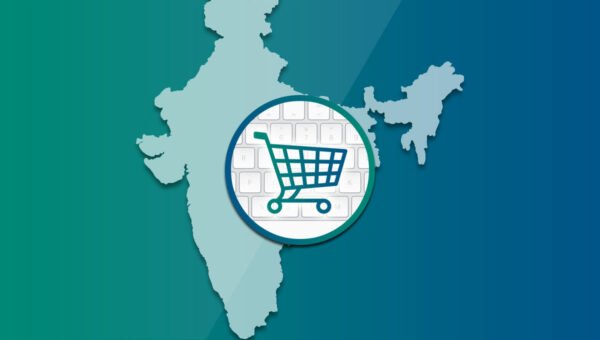
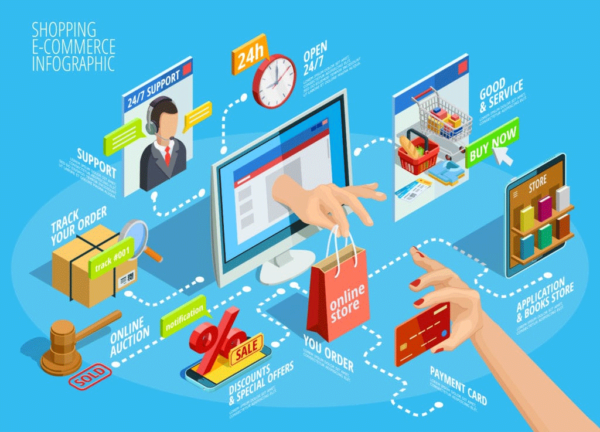 India’s e-commerce industry is booming.
India’s e-commerce industry is booming.


